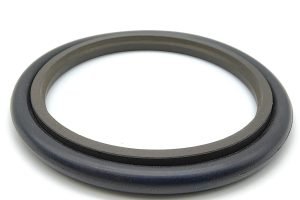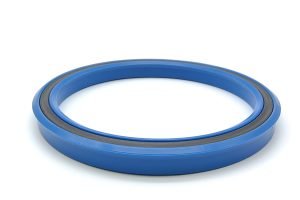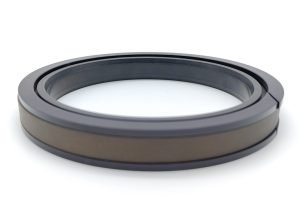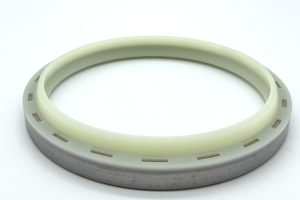We should pay attention to the piston seal on the hydraulic cylinder. If its sealing performance is not good, it will not only affect the performance and life of the piston and hydraulic cylinder but also cause damage to mechanical equipment and even pollute the environment.
The hydraulic cylinder piston seal is installed on the piston, mainly to seal the gap between the piston and the hydraulic cylinder wall to prevent the hydraulic oil from leaking from one end of the piston to the other end of the piston.
The basic requirements for the sealing device are good sealing performance and automatic improvement of sealing with the increase of pressure. In addition, the friction resistance should be small, oil-resistant, corrosion-resistant, wear-resistant, long-lasting, and easy to install and disassemble.
The following are examples of common hydraulic cylinder piston seal types:
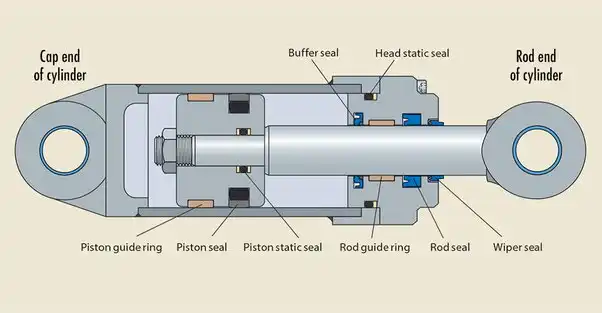
Table of Contents
ToggleAccording to the direction of action
They are divided into double-acting and single-acting
Double-acting piston seals
Double-action piston seals refer to piston seals designed to withstand media pressure from both directions (both sides) to achieve the effect of bidirectional sealing.
Single-acting piston seals
Single-action piston seals are compared to double-acting, which can only withstand media pressure from one direction (one side) to achieve single-acting sealing.
According to the design structure, they are divided into Glyer ring, T-type, O-type, V-type, Y-type, and combination type, etc.
According to the design structure
Glyd ring piston seal
The glyd ring is the most commonly used piston seal, mainly made of PTFE through CNC precision turning. The glyd ring has a simple design structure, simple installation, and is durable and reliable. It is widely used for its excellent chemical resistance, low friction, and long service life. In the global market, TYS provides the most cost-effective unique advantage with its proprietary R&D and material supply advantages for modified PTFE materials. Fill in the form to get the best quotation.
Piston T seal
T-ring piston seal refers to SPGW, which is also one of the most commonly used piston seals. The design structure is T-type and is made of PTFE sealing ring, NBR elastomer, and POM or modified PA retaining ring.
O-ring
O-rings are mainly used for static seals. O-rings are easy to install, cheap, and can work in the temperature range of -40~120℃. However, compared with lip seals, it has greater movement resistance and is prone to twisting when used for motion seal. Therefore, it is generally not used alone for hydraulic cylinder motion sealing, but is generally used in combination with other main seals.
When installing any shape of seal, it is necessary to ensure the appropriate pre-compression amount. If it is too small, it cannot be sealed. If it is too large, the friction will increase, and it is easy to be damaged. Therefore, the groove size and surface accuracy of the installed seal must be accurate.
In dynamic sealing, when the pressure is greater than 10 MPa, the O-ring will be squeezed into the gap and damaged. For this reason, a backup ring made of polytetrafluoroethylene or nylon is required on the low-pressure side of the O-ring. The thickness is 1.25~2.5mm. When it is subjected to high pressure in both directions, retaining rings are added on both sides. Its structure is shown in the figure below.
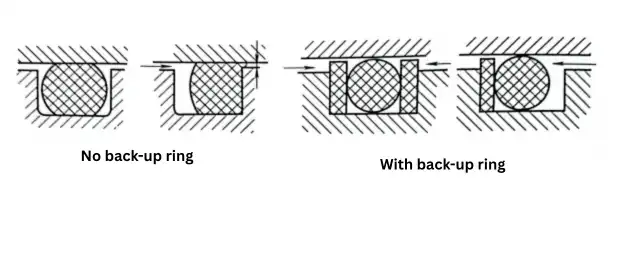
Y-ring
The cross section of the Y-ring is Y-shaped, and the Y-ring is generally a lip-shaped sealing ring. It is a sealing ring with good sealing, stability, pressure resistance, low friction resistance, and long service life, so it is widely used. The Y-ring is mainly used for reciprocating motion sealing. According to the different length and width ratios of the cross section, the Y-ring can be divided into two forms: wide section and narrow section. The figure below shows a wide section Y-ring.

The sealing effect of the Y-ring depends on the close contact of its lip to the coupling surface, and generates a large contact pressure under the action of hydraulic oil pressure to achieve the sealing effect. When the hydraulic pressure increases, the lip is closer to the coupling surface, the contact pressure is higher, and the sealing performance is better.
When the Y-ring is installed, the lip end face should face the side with high hydraulic pressure. When the pressure changes greatly and the sliding speed is high, a support ring should be used to fix the sealing ring, as shown in the figure below.
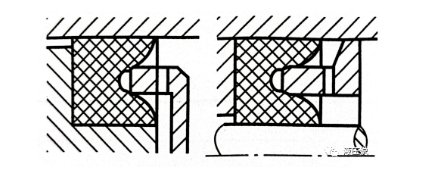
The wide section Y-ring is generally suitable for occasions with working pressure p<20MPa; the narrow section Y-ring is generally suitable for working under working pressure p<32MPa.
V-ring
The cross section of the V-ring is V-shaped, as shown in the figure below.
The V-ring consists of a pressure ring, a V-ring, and a support ring. When the working pressure is higher than 10 MPa, the number of V-rings can be increased to improve the sealing effect. When installing, the opening of the V-ring should face the side with high pressure.
The V-ring has good sealing performance, high pressure resistance, and a long service life. By adjusting the clamping force, the best sealing effect can be obtained, but the friction resistance and structural size of the V-ring are large. It is mainly used for the reciprocating motion sealing of the piston rod. It is suitable for working under a working pressure of p>50MPa and a temperature of -40~80℃.
According to the material
Rubber piston seals
Rubber is a common material for piston seals due to its flexibility and cost-effectiveness. However, rubber seals can degrade over time when exposed to extreme temperatures and chemicals.
PTFE piston seals
PTFE piston seals are mainly made of various modified PTFE materials, generally combined with NBR or FKM elastomers. The design structure can be customized according to the actual application environment to adapt to different working conditions.
Polytetrafluoroethylene (PTFE) seals are known for their chemical resistance and high-temperature tolerance. They are ideal for harsh environments but can be more expensive than rubber seals.
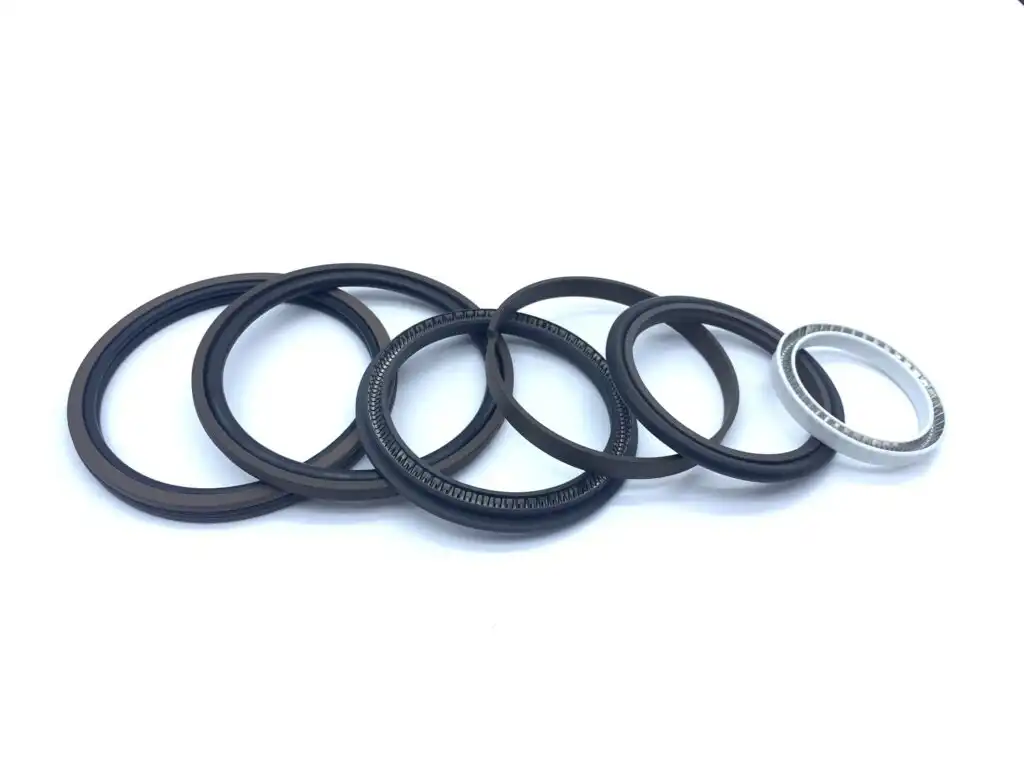
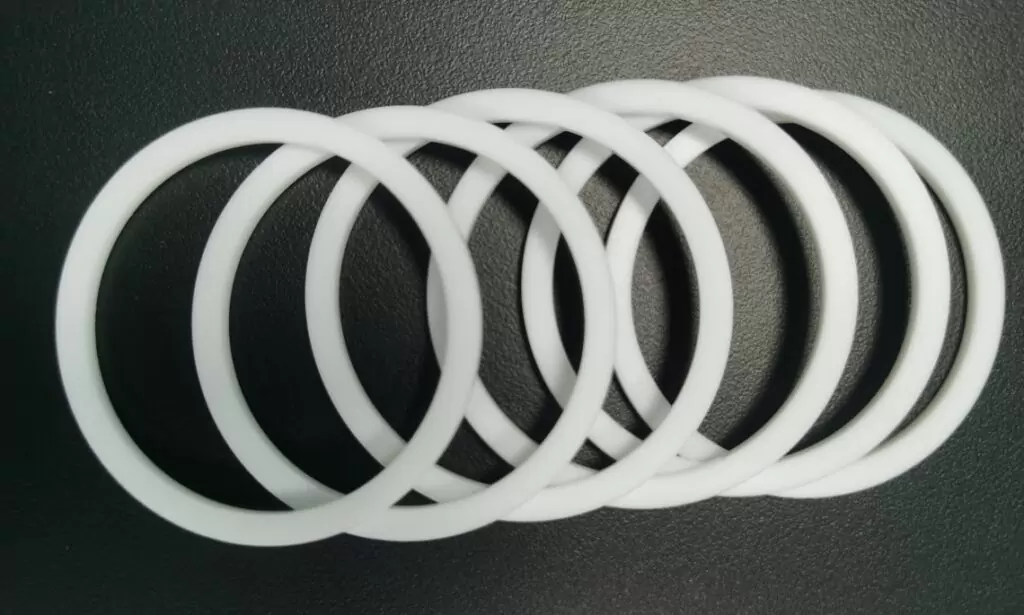
PU piston seals
PU piston seals are made of polyurethane and have a variety of design structures to meet different application requirements.
Polyurethane Seals offer a good balance of durability and flexibility. They are resistant to abrasion and can handle moderate to high pressures, making them a popular choice for many hydraulic systems.
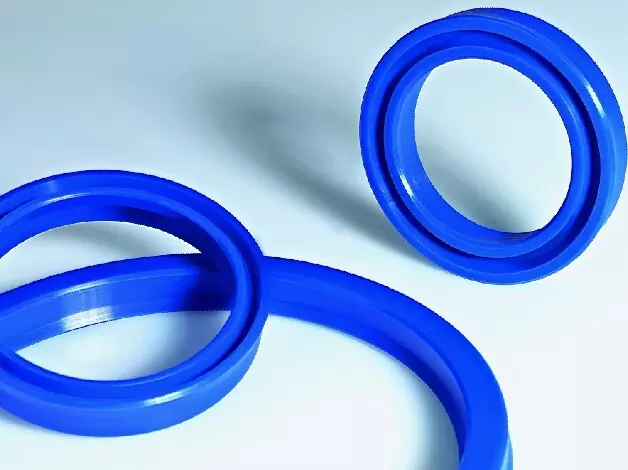
If you are looking for hydraulic cylinder piston seals, you can go to our piston seals product page or contact the TYS team to get free samples for your testing. TYS is your preferred manufacturer and supplier. We provide a wide range of materials and designs of piston seals to meet your specific application needs: our unique processing technology, shorter production process, and fast delivery.
Innovations in Piston Seal Technology
New Materials
Recent advancements have introduced new materials that enhance performance, durability, and resistance to extreme conditions. These innovations are pushing the boundaries of what’s possible in hydraulic seal technology.
Enhanced Design Features
New design features, such as improved seal geometries and integration with other components, are enhancing the efficiency and reliability of hydraulic systems.
TYS Joins Hands With Huaqiao University to Create Technological Innovation and Social Responsibility
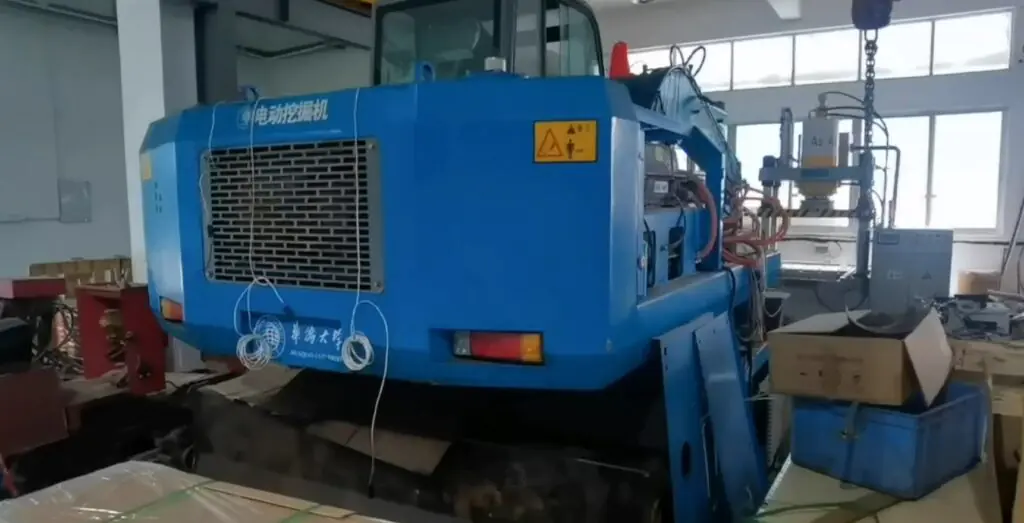
As a leading company specializing in the production of piston seals and hydraulic seals, TYS always maintains the mission of technological innovation and social responsibility. We are honored to be the experimental base of Huaqiao University, maintaining in-depth cooperation for a long time, and providing students with a practical platform for cutting-edge innovative technologies. Through close collaboration with universities, we create valuable practical opportunities for students and contribute to transforming scientific research results into productivity.
TYS knows that enterprises are part of the economy and a significant driving force for social development. As a member of society, we actively participate in talent training and innovative research and development, and promote technological progress in the industry. We believe that the deep integration of knowledge and industry can create more welfare for society and continue to promote the high-quality development of the manufacturing industry.
TYS carries the mission of technological innovation and promoting social progress.
Conclusion
Piston seals are vital for the proper functioning of hydraulic cylinders. Choosing the right type and material of seal is essential for maintaining system efficiency and preventing costly repairs. By understanding the various types of seals and their applications, you can make informed decisions to ensure the longevity and performance of your hydraulic systems.
FAQs
What is the main function of a piston seal?
The primary function of a piston seal is to prevent hydraulic fluid from leaking between the piston and the cylinder wall.
How often should piston seals be replaced?
Piston seals should be replaced based on the manufacturer’s recommendations or when signs of wear or leakage are detected. Click here to learn how to replace hydraulic cylinder seals.
Can I use any type of seal for a hydraulic cylinder?
No, the seal must be compatible with the operating conditions, including pressure, temperature, and chemical exposure.
What are the signs of a failing piston seal?
Common signs include leakage, reduced performance, and increased wear on other components. Learn more about Seal Failure Analysis in Hydraulic Cylinder.
How do I choose the right material for my piston seal?
Consider factors like operating pressure, temperature range, and chemical compatibility to select the most appropriate material for your needs.TYS offers both PTFE piston seals and PU piston seals. You can contact TYS to get.


